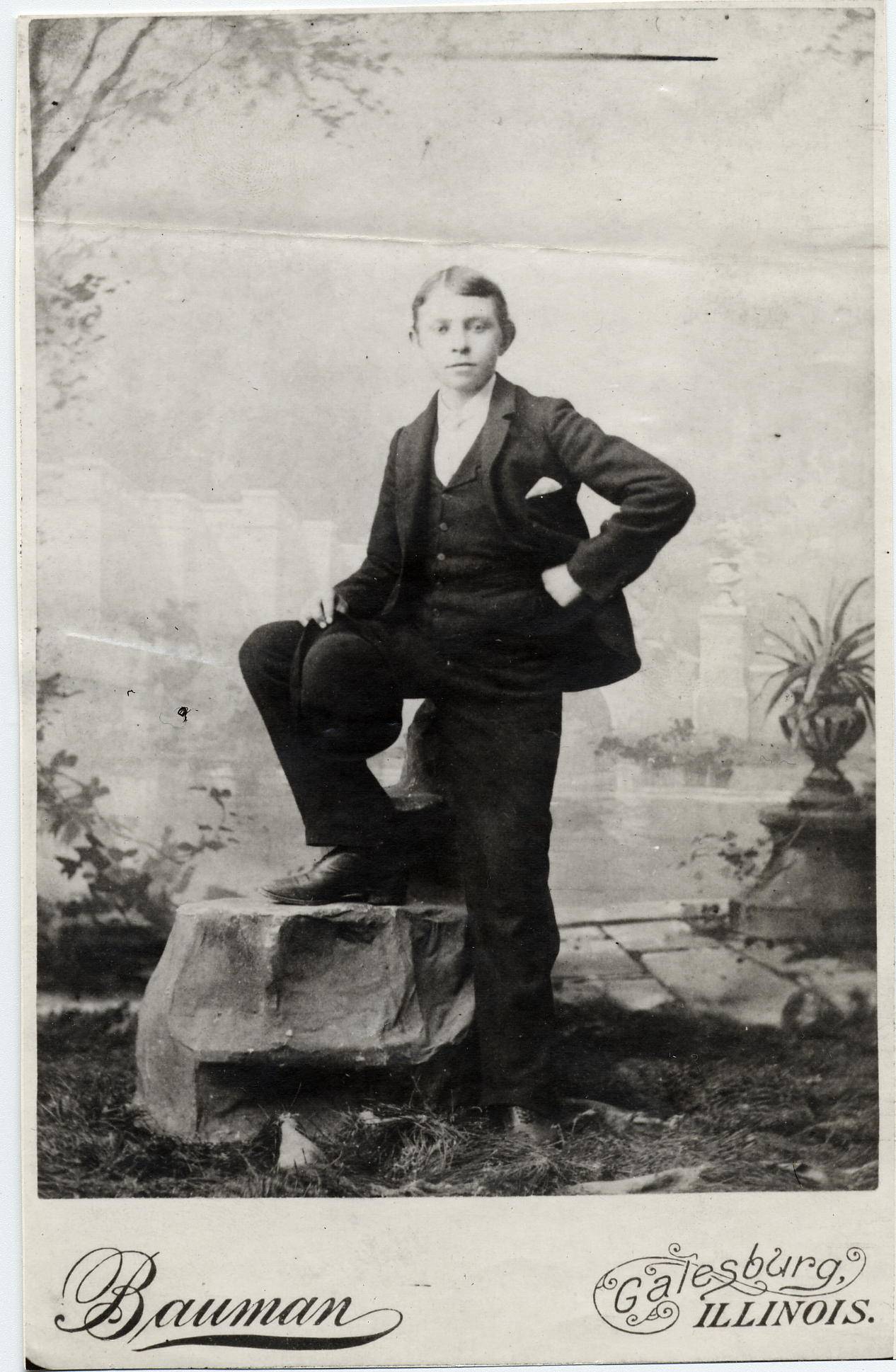February 4, 2013
Curiosity
By Barbara
Schock
Carl Sandburg had great
curiosity as a child. When his parents read the
Bible aloud, little Carl discovered the black
marks on the page meant something. Those marks
made words which had many meanings.
The mural which most
fascinated young Sandburg was of Elijah rising to
heaven in a fiery chariot provided by God. Carl
had seen a balloon ascension some time before and
thought it was similar. He wished that he would
have a fiery chariot in which to ride up to
heaven.
When August Sandburg took his
seven-year-old son to see the dedication of the
cornerstone of the new Knox County Courthouse in
1885, the boy wondered if the cornerstone held up
the entire structure. And, why were those men of
the Masonic order wearing aprons when they
performed the ceremony?
Carl and some of his grade
school friends saw their first human skeleton in a
classroom at Lombard College. It was so scary. Who
might that person have been? How was it held
together?
Music became an interest of
young Carl. He made his own instruments from
twigs, cigar boxes, wire and whatever else he
could find that made noise.. Willis Calkins taught
him chords to play on the banjo. Carl participated
in various programs and musicals at the Mission on
South Seminary Street. That was the beginning of
his lifelong career in performing before the
public. While at Lombard College, he took six
elocution courses to learn public speaking.
When a boy he found a pamphlet
which accompanied packs of expensive cigarettes.
He was able to persuade smokers of that brand to
save the little biographies for him. He continued
to
collect the biographies of Civil War generals and
other notable people of the day. The booklets were
just the right size to keep in his pocket. He
could take one out and read it whenever he had a
little time. Carl also read books at the YMCA and
the public library. He was always ready to learn
new things. There were many things in the books
that he pondered, but didn’t have enough knowledge
to sort out for himself.
By the time Sandburg reached
his twenties, he knew he wanted to be a writer. He
studied American and English poets and writers.
Walt Whitman was especially important in
Sandburg’s discovery of free verse.
While struggling to support
himself, Sandburg worked endlessly to improve his
writing and to find his own style. He traveled
west as a hobo. He went east selling stereoscopic
views. He went north as a socialist organizer. He
was trying to find his unique style of writing and
a way to bring money into his pockets. Along this
irregular path, he acquired knowledge, experience
and friends which were helpful to him the rest of
his life.
Sandburg’s Hometown
